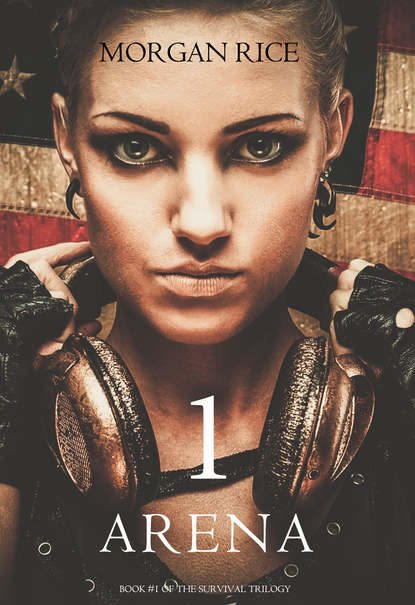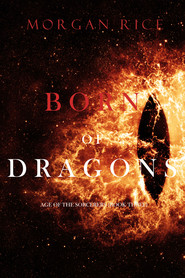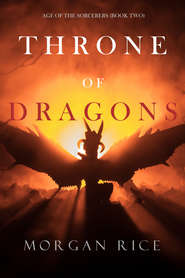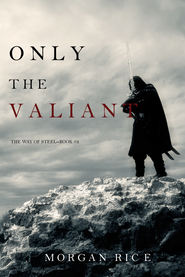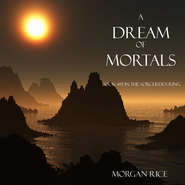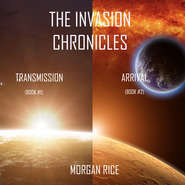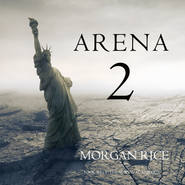По всем вопросам обращайтесь на: info@litportal.ru
(©) 2003-2024.
✖
Arena One: Slaverunners
Настройки чтения
Размер шрифта
Высота строк
Поля
We manage to rock it, and then, using our momentum, push it again and again. It takes all I have, and I can feel myself slipping in the snow, feel the pain tearing through my bicep, through my ribs.
The car rocks in bigger and bigger swings, and just as I wonder if I can go on, we give it one final heave. I reach up, above my head, pushing and pushing it, walking forward in the snow as I do.
It is just enough. The car reaches a tipping point, on its side, then suddenly lands with a crash on all four wheels. A huge cloud of snow rises up. I stand there catching my breath, as does Ben.
I survey the damage. It is extensive. The hood and roof and trunk look as if they’ve been worked over by a sledgehammer. But amazingly, the bones of it are still in shape. However, there is one glaring problem. One of the tires – the one that was shot out – is in such bad shape that there’s no way we can drive on it.
“Maybe there’s a spare,” Ben says, reading my mind. I look over and he’s already hurrying over to the trunk. I’m impressed.
I hurry over to it, too. He pushes the button several times, but it doesn’t open.
“Look out,” I say, and as he steps back I raise my knee and kick down hard with my heel. The trunk pops open.
I look down and am relieved to see a spare tire sitting there. Ben reaches in and grabs it, and I pull back the lining, and beneath it, find a jack and wrench. I take these and follow Ben, who carries the spare to the front. Without missing a beat, Ben takes the jack, jams it under the chassis, then takes the wrench and starts cranking it up. I’m impressed by how comfortable he is with the tools, and how quickly he gets the car jacked up. He removes all the bolts, pulls off the useless tire, and chucks it into the snow.
He puts on the new tire, and I hold it steady as he puts the bolts back in, one by one. He tightens them and lowers the car, and as we step back and look, it’s like having a brand-new tire. Ben has surprised me with his mechanical skills; I never would have expected that from him.
I waste no time opening the driver’s side door, jumping back in the car, and turning the keys. But my heart drops as I hear silence. The car is dead. I try the ignition again and again. But nothing. Nothing at all. It seems the accident destroyed the car somehow. A hopeless feeling sets in. Was this all for nothing?
“Pop the hood,” Ben says.
I pull the lever. Ben hurries around to the front and I get out and join him. I stand over him as he reaches in and starts fiddling with several wires. I am surprised by his dexterity.
“Are you a mechanic?” I ask.
“Not really,” he answers. “My Dad is. He taught me a lot, back when we had cars.”
He holds two wires together, and there is a spark. “Try it now,” he says.
I hurry back in and turn the ignition, hoping, praying. This time, the car roars to life.
Ben slams closed the hood, and I see a proud smile on his face, which is already swelling up from the broken nose. He hurries back and opens his door. He is about to get back in, when suddenly he freezes, staring into the backseat.
I follow his gaze, and I remember. The boy in the back.
“What should we do with him?” Ben asks.
There’s no more time to waste. I get out, reach in and remove the boy as gently as I can, trying not to look. I drag him several feet, in the snow, over to a large tree, and lay him down beneath it. I look at him for just a moment, then turn and run back to the car.
Ben still stands there.
“That’s it?” he asks, sounding disappointed.
“What do you expect?” I snap. “A funeral service?”
“It just seems…a bit callous,” he says. “He died because of us.”
“We don’t have time for this,” I say, at my wit’s end. “We’re all going to die anyway!”
I jump back into the running car, my thoughts fixed on Bree, on how far the other slaverunners have gone. While Ben is still closing his door, I peel out.
Our car goes flying across the snowy field, up a steep bank and back onto the highway with a bang. We skid, then catch traction. We are rolling again.
I step on the gas, and we start to gain real speed. I am amazed: this car is invincible. It feels as good as new.
In no time, we are doing over 100. This time I’m a bit more cautious, shell-shocked from the accident. I bring it up to 110, but don’t press it past that. I can’t risk wiping out again.
I figure they’re probably at least ten minutes ahead of us, and we might not be able to catch them. But anything can happen. All I need is for them to hit one bad pothole, for just one mishap to happen to them… If not, I’ll just have to follow their tracks.
“We have to find them before they reach the city,” Ben says, as if reading my mind. He has an annoying habit of doing that, I notice. “If they get there before us, we’ll never find them again.”
“I know,” I respond.
“And if we enter the city, we’ll never make it out. You know that, don’t you?”
The very same thought has been going through my mind. He’s right. From everything I’ve heard, the city is a deathtrap, filled with predators. We’re hardly equipped to fight our way out.
I step on it, giving it a bit more gas. The engine roars, and we are now cruising at 120. The snow hasn’t slowed, and bounces off the windshield. I think of the dead boy, see his face, his unblinking eyes; I remember how close we came to death, and a part of me wants to slow down. But I have no choice.
As we drive, time feels like it’s crawling, going forever. We drive twenty miles, then thirty, then forty…on and on, forever into the snow. I’m gripping the steering wheel with both hands, leaning forward, watching the road more carefully than I have in my life. I’m swerving to avoid potholes left and right, like a videogame. Which is hard to do at this speed and in this snow. Still, I manage to miss nearly all of them. Once or twice I don’t, though, and we pay the price dearly, my head slamming into the roof, and my teeth smashing into each other. But no matter what, I keep going.
As we round the bend, I spot something in the distance that worries me: the tracks of the slaverunner’s car seem to veer off the road, into a field. It doesn’t make any sense, and I wonder if I am seeing things correctly, especially in this blizzard.
But as we get closer, the more certain I become. I slow dramatically.
“What are you doing?” Ben asks.
My sixth sense tells me to slow down, and as we get close, I’m glad I do.
I slam on the brakes, and luckily I’m only doing 50 when I do. We slip and slide for about 20 yards, and finally, we come to a stop.
Just in time. The highway abruptly ends in a huge crater, plunging deep into the earth. If I hadn’t stopped, we would surely be dead right now.
I look down, over the edge of the precipice. It is a massive crater, probably a hundred yards in diameter. It looks like a huge bomb had been dropped on this highway at some point during the war.
I turn the wheel and follow the slaverunners’ tracks, which take me though a snowy field, then onto winding local roads. After several minutes, it leads us back onto the highway. I pick up speed again, this time bringing it up to 130.
I drive and drive and drive, and feel like I’m driving to the end of the earth. I probably cover another 40 miles and I begin to wonder how much farther this highway can go. The snowy sky begins to grow darker, and soon it will be nightfall. I feel the need to push and get the car up to 140. I know it’s risky, but I need to catch up to them.
As we go, we pass some of the old signs for the major arteries, still hanging, rusting away: the Sawmill Parkway; the Major Deegan; 287; the Sprain… The Taconic forks, and I merge onto the Sprain Parkway, then the Bronx River Parkway, following the slaverunners’ tracks. We are getting closer to the city now, open sky gradually replaced by tall, crumbling buildings. We are in the Bronx.
I feel the need to catch them and push the car up to 150. It becomes so loud I can barely hear.
As we round another bend, my heart leaps: there, in the distance, I see them, a mile ahead.
“That’s them!” Ben screams.
But as we close the gap, I see where they’re headed. A crooked sign reads “Willis Avenue Bridge.” It is a small bridge, encased in metal beams, barely wide enough for two lanes. At its entrance sit several Humvees, slaverunners sitting on the hoods, machine guns mounted and aimed towards the road. More Humvees sit on the far side of the bridge.





